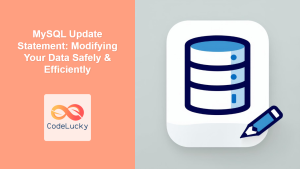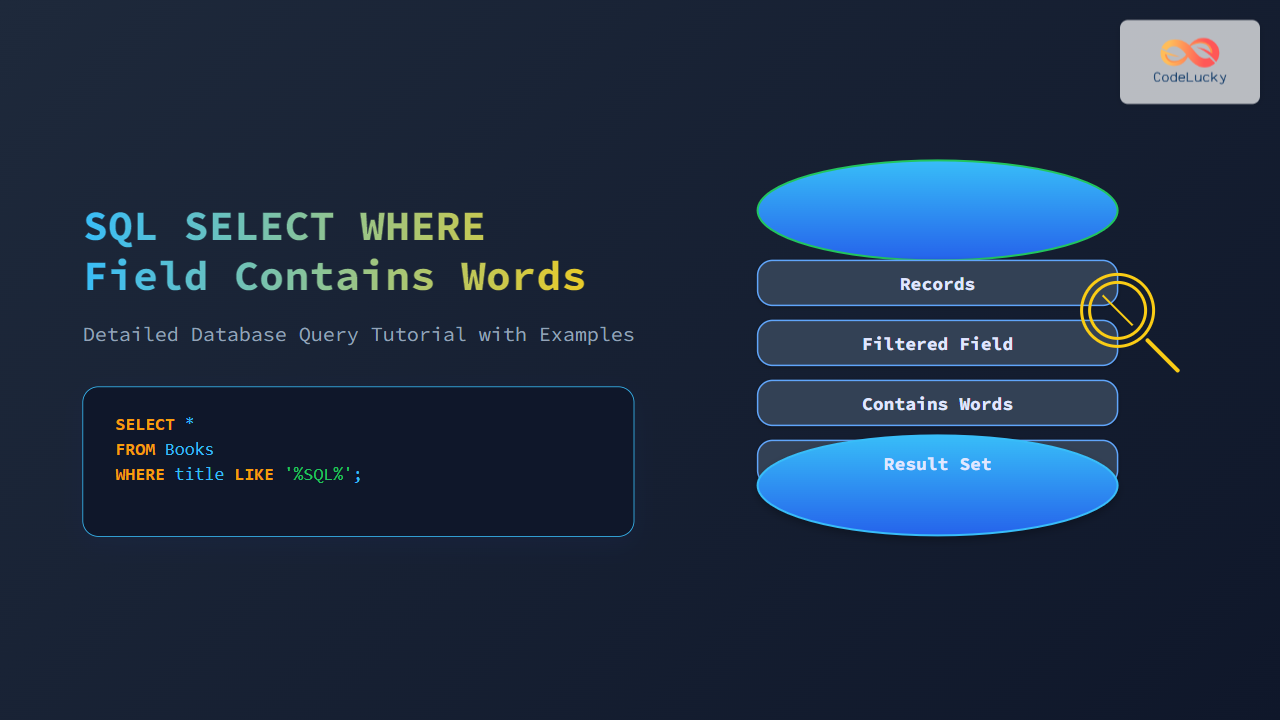In the ever-evolving world of database management, the ability to modify existing table structures is crucial. Enter the SQL ALTER TABLE statement – a powerful tool that allows database administrators and developers to make changes to table schemas without losing data. This comprehensive guide will walk you through the ins and outs of the ALTER TABLE statement, providing you with the knowledge to confidently modify your database structures.
Understanding the ALTER TABLE Statement
The ALTER TABLE statement is used to add, delete, or modify columns in an existing table. It also allows you to add and drop various constraints on an existing table. This flexibility makes it an essential part of database maintenance and evolution.
🔑 Key Point: The ALTER TABLE statement modifies an existing table structure without affecting the data stored within it.
Let's dive into the various operations you can perform using the ALTER TABLE statement.
Adding a New Column
One of the most common uses of ALTER TABLE is to add a new column to an existing table. The basic syntax for this operation is:
ALTER TABLE table_name
ADD column_name datatype;
Let's look at a practical example. Suppose we have a table called employees:
CREATE TABLE employees (
employee_id INT PRIMARY KEY,
first_name VARCHAR(50),
last_name VARCHAR(50),
hire_date DATE
);
Now, we want to add an email column to this table:
ALTER TABLE employees
ADD email VARCHAR(100);
After executing this statement, our employees table will look like this:
| employee_id | first_name | last_name | hire_date | |
|---|---|---|---|---|
| 1 | John | Doe | 2023-01-15 | NULL |
| 2 | Jane | Smith | 2023-02-01 | NULL |
As you can see, the new email column has been added, and existing rows have NULL values for this new column.
Adding Multiple Columns
You can also add multiple columns in a single ALTER TABLE statement:
ALTER TABLE employees
ADD phone VARCHAR(20),
ADD department VARCHAR(50);
This will add both phone and department columns to our employees table:
| employee_id | first_name | last_name | hire_date | phone | department | |
|---|---|---|---|---|---|---|
| 1 | John | Doe | 2023-01-15 | NULL | NULL | NULL |
| 2 | Jane | Smith | 2023-02-01 | NULL | NULL | NULL |
Modifying an Existing Column
To modify an existing column, you can use the ALTER TABLE MODIFY COLUMN statement. The syntax varies slightly depending on the database system you're using. Here's a general form:
ALTER TABLE table_name
MODIFY COLUMN column_name new_datatype;
For example, let's say we want to increase the size of the first_name column:
ALTER TABLE employees
MODIFY COLUMN first_name VARCHAR(100);
This increases the maximum length of the first_name field from 50 to 100 characters.
⚠️ Caution: Be careful when modifying column data types. Changing to a smaller data type or a different type altogether might result in data loss if the existing data doesn't fit the new type.
Renaming a Column
To rename a column, you can use the ALTER TABLE RENAME COLUMN statement:
ALTER TABLE employees
RENAME COLUMN phone TO contact_number;
This changes the column name from phone to contact_number:
| employee_id | first_name | last_name | hire_date | contact_number | department | |
|---|---|---|---|---|---|---|
| 1 | John | Doe | 2023-01-15 | NULL | NULL | NULL |
| 2 | Jane | Smith | 2023-02-01 | NULL | NULL | NULL |
Dropping a Column
To remove a column from a table, you can use the ALTER TABLE DROP COLUMN statement:
ALTER TABLE employees
DROP COLUMN department;
This removes the department column from our table:
| employee_id | first_name | last_name | hire_date | contact_number | |
|---|---|---|---|---|---|
| 1 | John | Doe | 2023-01-15 | NULL | NULL |
| 2 | Jane | Smith | 2023-02-01 | NULL | NULL |
🚫 Warning: Dropping a column permanently deletes all data in that column. Make sure you have a backup or are certain you no longer need the data before dropping a column.
Adding Constraints
ALTER TABLE can also be used to add constraints to existing columns. Let's look at a few examples:
Adding a NOT NULL Constraint
ALTER TABLE employees
MODIFY email VARCHAR(100) NOT NULL;
This ensures that the email column cannot contain NULL values. However, if there are existing NULL values in this column, you'll need to update them before adding the constraint.
Adding a UNIQUE Constraint
ALTER TABLE employees
ADD CONSTRAINT unique_email UNIQUE (email);
This adds a UNIQUE constraint to the email column, ensuring that no two employees can have the same email address.
Adding a Foreign Key Constraint
Suppose we have another table called departments:
CREATE TABLE departments (
department_id INT PRIMARY KEY,
department_name VARCHAR(50)
);
We can add a foreign key constraint to link the employees table to the departments table:
ALTER TABLE employees
ADD department_id INT,
ADD CONSTRAINT fk_department
FOREIGN KEY (department_id) REFERENCES departments(department_id);
This adds a department_id column to the employees table and creates a foreign key relationship with the departments table.
Dropping Constraints
Just as we can add constraints, we can also drop them:
ALTER TABLE employees
DROP CONSTRAINT unique_email;
This removes the UNIQUE constraint we previously added to the email column.
Renaming a Table
While not strictly part of column modification, ALTER TABLE can also be used to rename an entire table:
ALTER TABLE employees
RENAME TO staff;
This changes the name of our table from employees to staff.
Best Practices for Using ALTER TABLE
- 🔒 Always backup your database before making structural changes.
- 📅 Schedule ALTER TABLE operations during off-peak hours to minimize disruption.
- 🧪 Test your ALTER TABLE statements in a development environment before applying them to production.
- 📊 For large tables, consider the impact on performance and storage requirements.
- 📝 Document all changes made to table structures for future reference.
Conclusion
The ALTER TABLE statement is a powerful tool in SQL that allows you to modify your database structure as your application evolves. From adding new columns to modifying existing ones, from adding constraints to dropping them, ALTER TABLE provides the flexibility needed to manage your database effectively.
Remember, with great power comes great responsibility. Always approach table alterations with caution, ensuring you understand the implications of your changes and have proper backups in place.
By mastering the ALTER TABLE statement, you're equipping yourself with a crucial skill in database management. As you continue to work with databases, you'll find countless scenarios where ALTER TABLE becomes your go-to solution for evolving your data structures.
Keep practicing, stay curious, and happy coding! 🚀💻



















